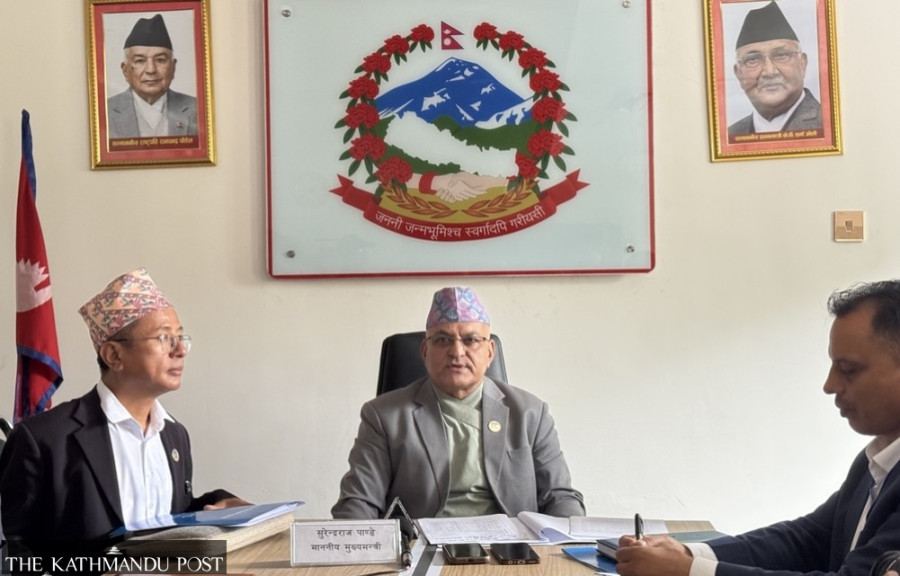Gandaki Province
Gandaki launches bureaucratic overhaul to curb costs, boost efficiency
Nine offices and 185 positions to be scrapped, and 32 offices will be merged into 17. The move is expected to save up to Rs500 million a year, according to officials.
Deepak Pariyar
In a decisive push for fiscal discipline and efficient governance, the Gandaki provincial government has unveiled its most extensive administrative restructuring since the inception of federalism, scrapping nine offices, merging 32 into 17 and cutting 185 positions. The move, officials claim, will trim salary expenses by an estimated Rs400-500 million annually while streamlining service delivery.
The provincial cabinet, in its Monday meeting, approved the reforms based on recommendations from a high-level “Provincial Administrative Structure Review, Study and Suggestion Committee” led by former federal secretary Sharad Chandra Poudel. The panel’s report, submitted on June 6, highlighted redundancies, overlapping jurisdictions and high administrative overheads as structural weaknesses that needed urgent correction. Based on the report, a second committee headed by Chief Secretary of Gandaki Province Khagendra Subedi refined the proposals before submitting its final report on Sunday.
Chief Minister Surendra Raj Pandey told reporters that the reforms were a direct response to public concerns over an inflated provincial bureaucracy. “The provincial structure had become costly and expanded the burden on the state. Our primary aim is to cut administrative expenses without compromising service delivery,” Pandey said.
The first phase of the plan eliminates seven directorates—tourism, industry commerce and consumer welfare protection; agriculture development; livestock and fisheries development; infrastructure development; forest; education development and provincial health—along with two regional health centres. Their responsibilities will now be managed by branches or divisions within the relevant ministries.
According to the provincial government, no public service will be discontinued; instead, offices will operate on a two-district coverage model in certain cases. For example, tourism and industry offices in Myagdi and Mustang will merge, with the new office located in Myagdi. Similar consolidations will occur between Baglung-Parbat, Syangja-Kaski, Tanahun-Gorkha, and Lamjung-Manang, while Nawalpur East will remain unchanged.
The social development offices will follow the same pattern of mergers, reducing the number from 11 to six across the province. Technical units such as crop protection laboratories, soil and fertiliser testing facilities and seed quality control centres will be integrated into single provincial labs.
The restructuring also slashes 185 positions—41 at the officer level, 96 in assistant categories, and 48 in other roles. The health ministry faces the largest reduction with 57 posts cut, followed by agriculture and land management (25), social development (24), forest and environment (22), energy and water resources (14), infrastructure and transport (14), the provincial assembly secretariat (14), and the Chief Minister’s Office (13).
In the health ministry alone, positions eliminated include one under-secretary, three section officers, three accounts officers, and seven nursing officers, among other roles. The cuts are expected to generate long-term savings not only in salaries but also in pension obligations, medical allowances and leave benefits.
Addressing fears among employees, Pandey assured that no permanent staff would lose their jobs and that career development opportunities would remain intact. The government has also introduced the “Employee Transfer and Deputation Guidelines, 2025,” dividing offices and geographic areas into four categories. Under the guidelines, officials must serve in different categories before repeating a posting, aiming to curb politically influenced transfers and ensure that no one serves more than two consecutive years in the same office. “The new set of guidelines will ensure transfers based on merit and will strengthen institutional capacity,” the chief minister claimed.
The administrative overhaul will be implemented in three stages. The first phase focuses on eliminating or merging offices and cutting positions. The second will review organisational structures for further optimisation, while the third will evaluate the effectiveness of service delivery before making final adjustments.
The government has held consultations with employee unions ahead of the announcement, seeking to avoid labourers’ unrest. Officials argue that after seven years of provincial governance, the time is ripe for structural review.
“When we created these offices seven years ago, we were still testing federalism. Now, with years of experience, it is clear that some structures have failed to justify their existence,” Pandey said.
Analysts say Gandaki’s bold experiment could serve as a template for other provinces grappling with inflated administrative costs and overlapping jurisdictions. Since the introduction of federalism in 2015, provincial governments have faced criticism for building top-heavy bureaucracies that consume significant budget shares without proportionate improvements in public service delivery.
If successful in Gandaki, the administrative reforms could help restore public confidence in the provincial tier, which has often been viewed as an additional layer of bureaucracy and financial burden for the country.




 16.2°C Kathmandu
16.2°C Kathmandu.jpg)










